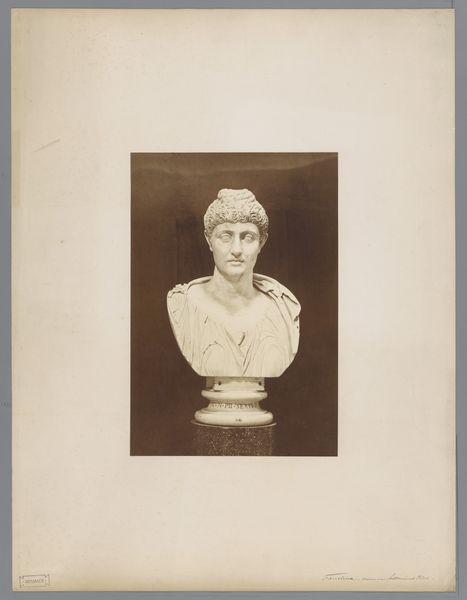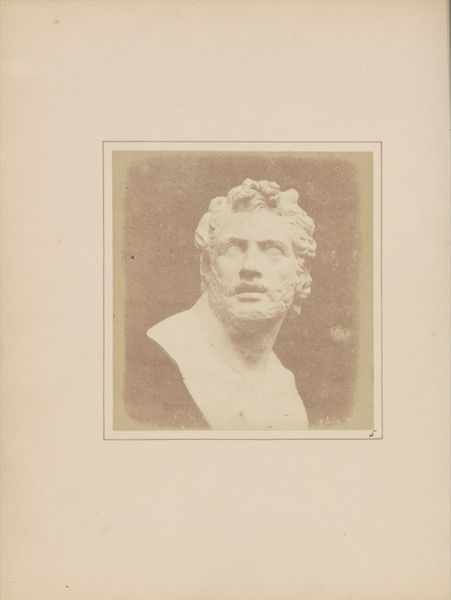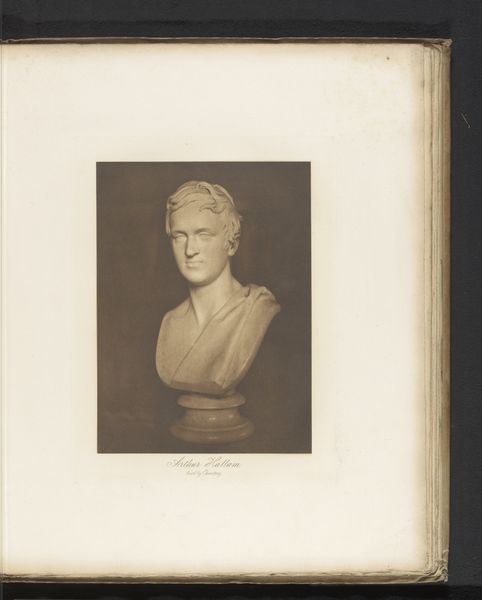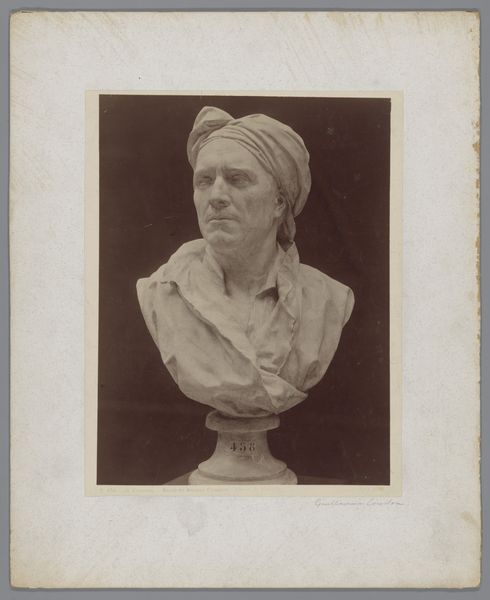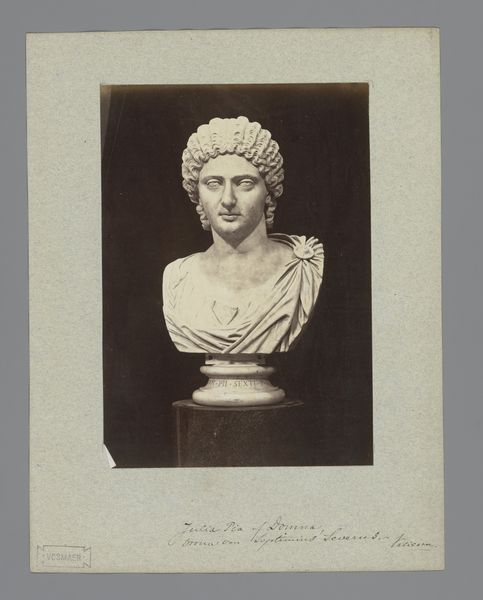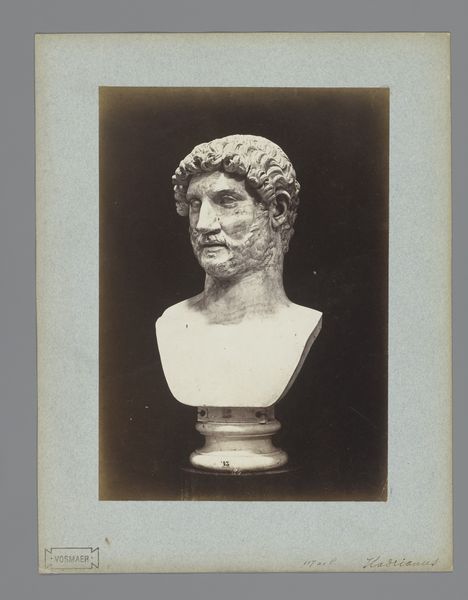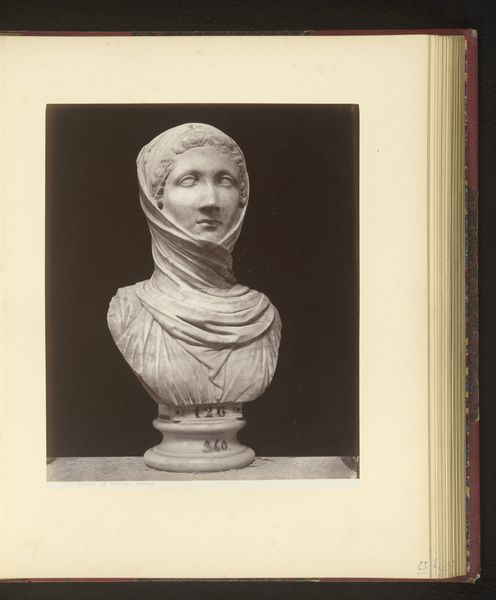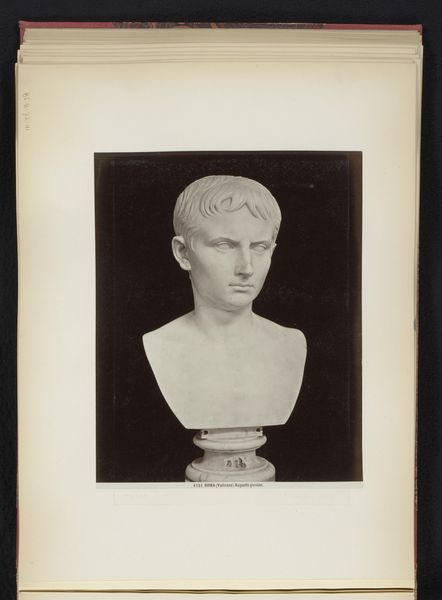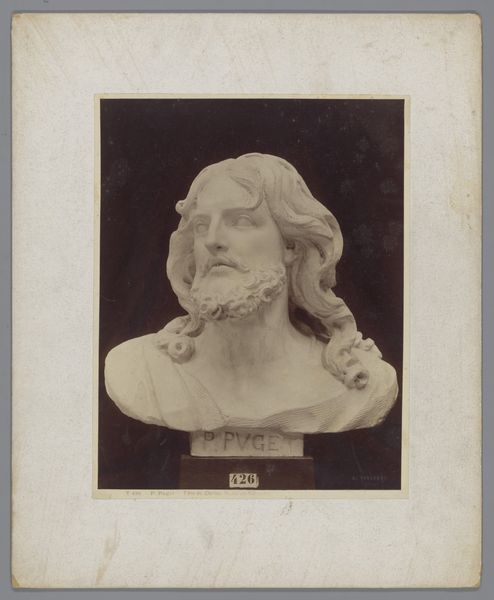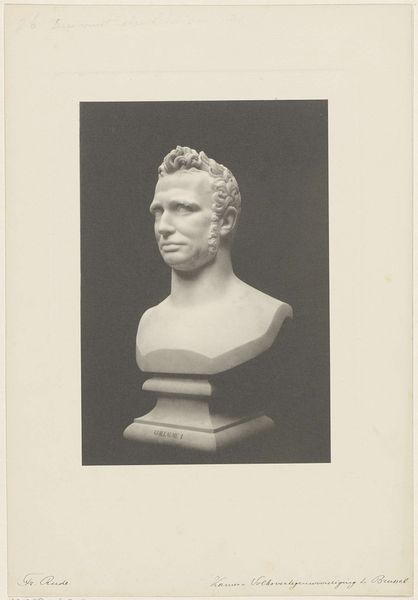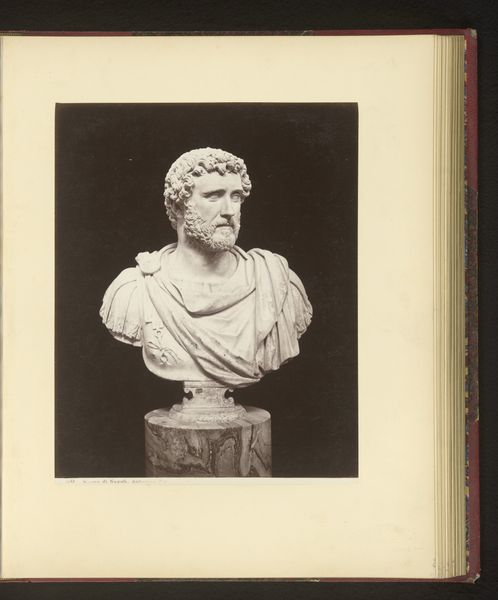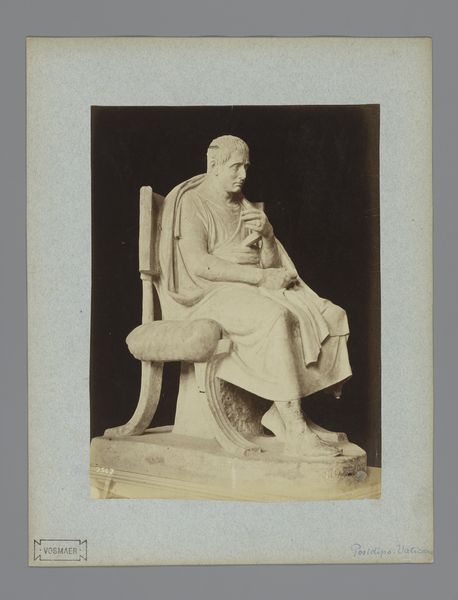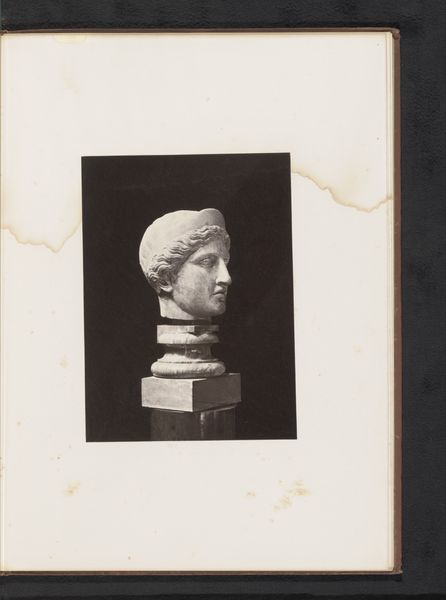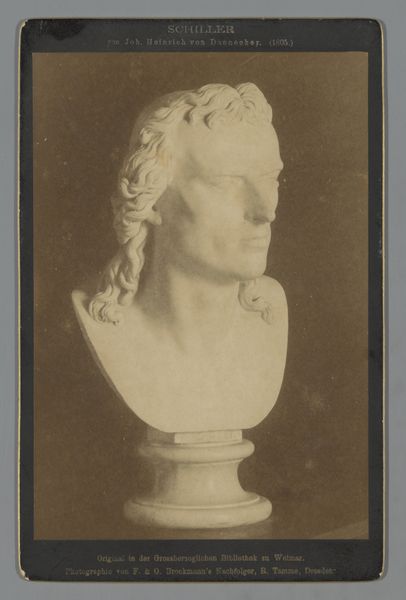
Buste van Pompeia Plotina, vrouw van Trajanus, in de Vaticaanse Musea te Vaticaanstad, Italië 1851 - 1890
0:00
0:00
Dimensions: height 323 mm, width 241 mm
Copyright: Rijks Museum: Open Domain
Editor: Here we have a gelatin silver print, sometime between 1851 and 1890, depicting a marble bust of Pompeia Plotina, the wife of Trajan. The photograph itself is quite beautiful, almost sepia-toned, really emphasizing the smooth, cool quality of the marble. What are your thoughts when you look at it? Curator: My attention is drawn to the layers of production at play here. We have an object, the marble bust, crafted likely through extensive labor, meant to embody a certain power. Then we have the photographic reproduction, a separate process with its own specific materials – the gelatin, the silver, the paper – all interacting chemically. How does this photograph, in its materiality, both preserve and transform the original sculpture's meaning? Editor: That’s an interesting way to look at it! I was mainly considering the aesthetic, the neoclassical style and how it references Roman ideals. But you are focusing on the physical making. Curator: Precisely. The photograph itself becomes an object of consumption. It democratizes access to this image of power, yes, but also inserts it into a market of exchange. Consider where the materials for this photograph came from, who produced them, who consumed the final product, and for what reasons? Does the mass production of photographic images impact our understanding of the classical world? Editor: I see what you mean. It's not just about the subject of the photo, but the whole industry that surrounds its creation and distribution. Were these photographs widely available? Curator: That's a key question! Looking at photographic practices during this period would reveal the networks of exchange, both artistic and economic. Understanding that system informs how we interpret this image and its role in perpetuating and reinterpreting classical ideals. Editor: So, by examining the materials and the means of production, we get a more complete picture of not just the artwork itself, but its place in society. Thanks! Curator: Indeed, thinking materially brings the processes of art making into sharp relief.
Comments
No comments
Be the first to comment and join the conversation on the ultimate creative platform.
